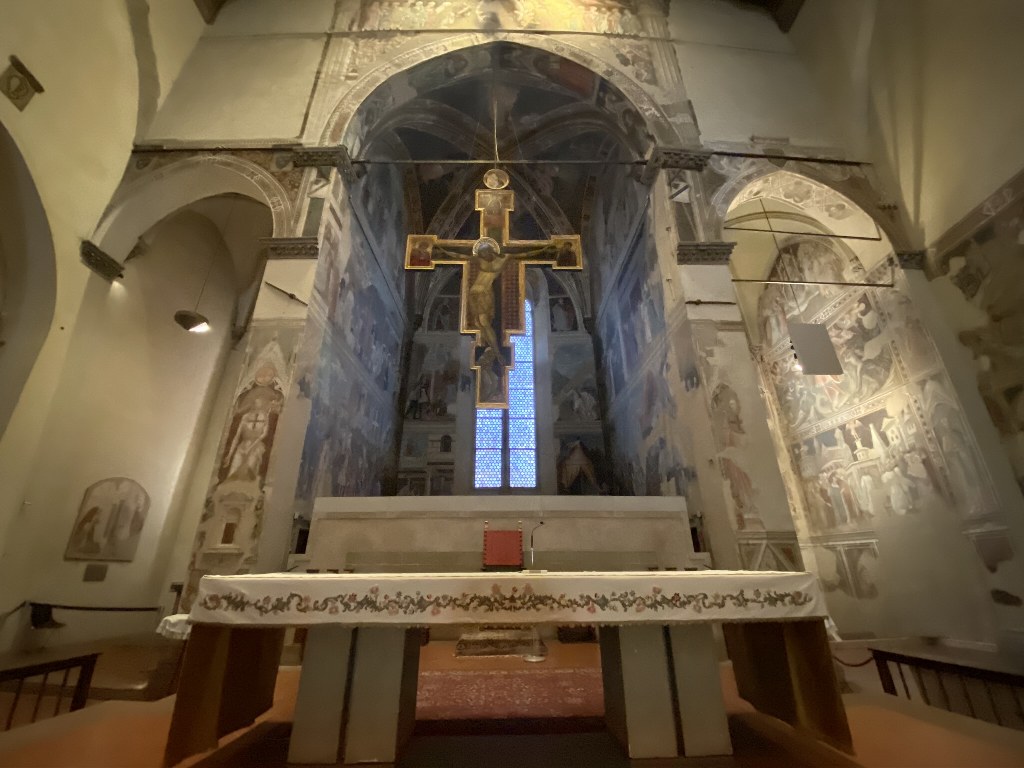Arezzo is a beautiful city,
alive, rich and relatively little known.
It was once referred to as,
"the city of gold", a large industrial zone with thousands of
metalworking companies.
Today it is changing direction
and is opening up to tourism and events; it was the location for the 1999 Oscar
winning film "La Vita è Bella" by Roberto Benigni.
More and more exhibitions and shows
for the performing arts are organized there (one of the most recent being an
exhibition by the artist Mimmo Palladino, contemporary sculptor, with
paintings, sculptures and settings in dialogue with Piero della Francesca).
Arezzo is 30 minutes from Cortona
by car or 30 minutes by train from either Camucia or Terontola train stations.
Near the church of San Francesco,
there are spaces where temporary exhibitions are displayed, which I recommend
you visit. Another location where the exhibitions are held is at the
"fortress" at the top of the ancient defensive walls. ( La Fortezza
Medicea was built, destroyed and rebuilt many times between the 14th and the
16th centuries).
Inside the church of San Francesco
(43.464686, 11.881059) you can see the most famous, local works of art: "The History of the True Cross", by
Piero della Francesca, considered his greatest masterpiece and which narrates,
in a series of frescoes, a medieval story about the cross on which Jesus was
crucified. There is the Battle of the Milvian Bridge which refers to the moment
in time when the emperor Constantine I (c. 280-337), made his soldiers battle
under the sign of a Christian Cross (after a long and bloody persecution of the
Christians in the Roman Empire).
The work is amazing, one of the
most important testimonies of the Italian Renaissance, dating back to the
mid-fifteenth century. To visit it, it’s necessary to buy a ticket – the ticket
office is downstairs.
Another attractive place to
visit, is the church of San Domenico (43.469004, 11.881942 ) where you can see Cimabue’s
Crucifix, a big, wooden statue, dating back to 13th century. It seems it was the
first of Cimabue’s major works – after which he worked in Florence and in Rome,
under the Pope; a work of his - La Maestà - is set in the Louvre museum in
Paris
Every first Sunday of the month (starting
on the Saturday), there is an antiques market which is among the most important
in Italy. It is located in the historic
centre. There are hundreds of stalls displaying antiques (many of which are on
a ‘flea market’ level!) set in the main street and squares … a great time to
walk about surrounded by history and beauty, but with the possibility of buying
something that is part of the local culture. The best months to experience the
“Fiera antiquaria” as it is known, are May, June and September.
In summer there is also the
“Giostra del Saracino”, a jousting competition undertaken in Medieval costume between
the four neighborhoods of the city. There
are processions, beautifully adorned horses, trumpets, banners and a great deal
of colour.
There are two events held: one, on
the penultimate Saturday of June, at night and dedicated to “San Donato”,
patron saint of Arezzo and called "Giostra di San Donato" and the second
on the first Sunday of September, during the day, dedicated to the sacred image
of the “Madonna del Conforto”, patroness of Arezzo and called "La Giostra
della Madonna del Conforto".
I’ve never seen the actual
“Giostra” which is held in Arezzo’s main square, Piazza Grande, in person, (43.464652,
11.884250), but I’ve been to Arezzo during these days and the atmosphere is
magic; you can see a great historical procession heralded by the sounds of
drums and trumpets used during battles centuries ago.
In front of the church of San
Francesco, there is Arezzo’s most famous cafè, “Caffè dei Costanti - once
famous as a place for playing chess. Now it a great place to enjoy a drink,
looking at the façade of the church and sitting at one of the outdoor tables.
Ideas for lunch? Under the
loggias in Piazza Grande there is a well-known restaurant called La Lancia
d’Oro (the golden lance) which is quite upmarket and elegant; a second option
is the more rustic "Osteria dell'Agania" which is informal with
traditional food and dishes.
Finally, a special mention for
the "Sugar" clothes shop, at the top of “Corso Italia” (43.464517,
11.882444 ), a top level store, in a spectacular setting (an ancient noble palazzo rearranged in a contemporary style
– now called Palazzo Sugar). It houses only the top name labels and collections
and manages to combine the garments on display with a sense of history,
tradition and culture.



_1024x768.jpeg)





